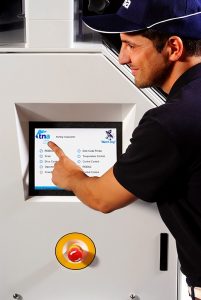Packaging line integration & automation: 5 ways effective controls can boost performance
May 19, 2020

Conversations around automation in manufacturing have been gaining ground over the last couple of decades. Much has been emphasised on the benefits of automation to boost performance, enable flexibility and improve efficiency. So, what does Automation entail and how does it lend itself to increased productivity in the packaging industry.
Automation encompasses the integration of diverse components and multiple technologies – from simplified graphic user interfaces and next-generation EtherCat systems that automate motion, to hardware, such as sensors, transducers, encoders and I/O modules. When done right, automation supports all elements of a production line in working together to increase productivity, meet packaging quotas and ultimately, ensure operational profitability.
While the benefits of implementing an effective automation and controls system are clear, the installation process does not come without its challenges. Operators must set clear objectives and select the best-suited and most effective components to achieve their goals. Here, we explore the perks of packaging automation software, outlining 5 ways effective controls that can boost performance to reap the rewards of integration.
- Gain complete control
Automation of a packaging line starts at the multi-head weigher – where the product enters – and finishes at the case packer. This includes the individual components that make up the packaging process too, like the metal detector, date coder, vertical form fill and seal system and take away conveyor. In an integrated line, the human machine interface (HMI) takes centre stage and becomes the command centre and central processing unit of the entire process. From here, operators can control practically any and every associated component from a single source for the ultimate simplicity and convenience. Depending on the sophistication of the technology employed, it’s also possible to adopt varying levels of access control, to ensure specific levels of functionality are assigned to certain personnel. - Achieve greater transparency
Electrical controls integration and reporting technology, such as supervisory control and data acquisition (SCADA) systems, provide full visibility of the entire packaging line and deliver comprehensive diagnostics (for each piece of equipment) to a single platform, where the information is logged on a central database to create detailed reports. Easily accessible from a clear and concise Human Machine Interface (HMI), the analysis of these documents can help operators expose inefficiencies, as well as develop a correction plan to enhance productivity. - Optimise resource utilisation
Most packaging facilities employ a human workforce alongside automated systems to ensure processes run smoothly, issues are dealt with promptly, and maintenance and repair tasks are carried out efficiently. Ensuring coordination of human labour and technology is crucial to keep production downtime to a minimum and safeguard operational viability and profitability. Staff might, for example, be occupied with repetitive tasks that could be more accurately performed by a machine. Meanwhile, an effective HMI can detect faults much quicker than the human eye and allow operators to react quickly to issues. In addition, operators must be trained to use a single platform only, saving time and further reducing the risk of human error. - Reduce unnecessary waste
With automation becoming a central part of many packaging lines, products are bagged at ultra-high speeds, increasing the chances of damage or breakage. Often caused by inaccurate control equipment or badly tuned processes, material waste is a significant challenge and can affect the entire packaging cycle. With a detailed user requirement specification (URS), control system providers can help identify the required key performance indicators (KPIs) that an individual manufacturing process requires. Once analysed, the URS is then translated into a functional design specification (FDS) that can be used to tighten up the process. The result is a much smoother and more reliable product flow that minimises waste and production downtime. - Support more sustainable ways of working
With increasing automation comes a rise in energy consumption. While this is inevitable to some extent, technologies exist that can help operators significantly lower a packaging line’s energy usage and carbon footprint. By implementing power saving software, the partial and phased shut down, and power-up components of equipment can be automated, which optimises the use of resources — from power to compressed air consumption. This helps plant managers improve economic efficiency, while lowering the environmental impact of their operations.
Get in touch to find out how tna can help your business deploy a fully automated packaging line to achieve the highest productivity rates: [email protected]

















